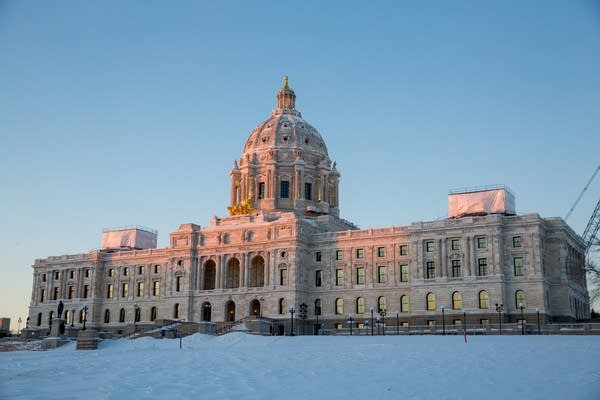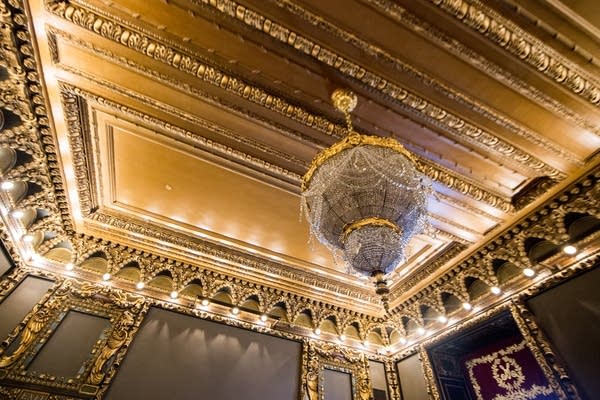The awe is back: Take a tour through the newly restored state Capitol

In 1898, two years into the Capitol's construction, U.S. Sen. Cushman Davis proclaimed the building would be "the great political sensorium of Minnesota" — what you see, hear and touch would overload the senses.
That feeling of awe has returned following a multi-year, $310 million restoration.

"It's going to be really remarkable, jawdropping, I think, for people who have been in the Capitol before or even if you haven't to come through and see the restoration and see places you've been seeing for years and how much more spectacular it looks after it has been cleaned up and restored," said Department of Administration Commissioner Matt Massman.
While there are some new features and plenty of fresh paint, officials won't be bothered if you think the place still has the feel of 1905.
Create a More Connected Minnesota
MPR News is your trusted resource for the news you need. With your support, MPR News brings accessible, courageous journalism and authentic conversation to everyone - free of paywalls and barriers. Your gift makes a difference.

So, what's different?
For starters, there's more room for the public to roam — 40,000 square feet more — with new places to assemble a school group, grab a bite to eat, stage a rally or relax with a newspaper.
The formerly claustrophobic basement used to have exposed pipes and wiring that gave it the feel of a submarine. Now, there are wide hallways and newly tiled floors, with a circular gathering spot at its center.

Third-floor skylights long hidden by dark paint, drop ceilings and ventilation ducts have been exposed in the east wing, where there are also more side rooms and lounging areas for the public .
Throughout the building, people will find and can use some of the 600 pieces of historic furniture traced to original designs by Cass Gilbert, the Capitol's architect.

And if there are areas of the building that look the same as before, that's part of the point.
Wayne Waslaski helped oversee the project and said planners didn't want to tinker too much with history.

"When we started the project we broke the project down into zones," he said. "Zone one space is the highest level of preservation. So you want those spaces to look exactly like they did in 1905 or as close as possible to what they looked like in 1905."
That's the case with the Rotunda and the chambers for the House and Senate. There is new carpet — matching the old patterns — and delicately retouched murals where the color pops from the wall, like the neon green wrap worn by one figure in a Moses mural in the Supreme Court chamber.

Inside the giant dome encasing the Rotunda, years of plaster damage from water intrusion and buildup from coal soot and cigarette smoke have been reversed.
"In many ways, this is unchanged except for the colors are a lot more vibrant, it's not leaking, the stone has been cleaned, the floor has been cleaned, the chandelier functions better," Waslaski said.
"We're not concerned when it goes up and down that the mechanical systems are going to break or fail. So it really is what you don't see then where $310 million went into this."
A series of grand re-opening events is set for Aug. 11-13, but guided tours are now available.